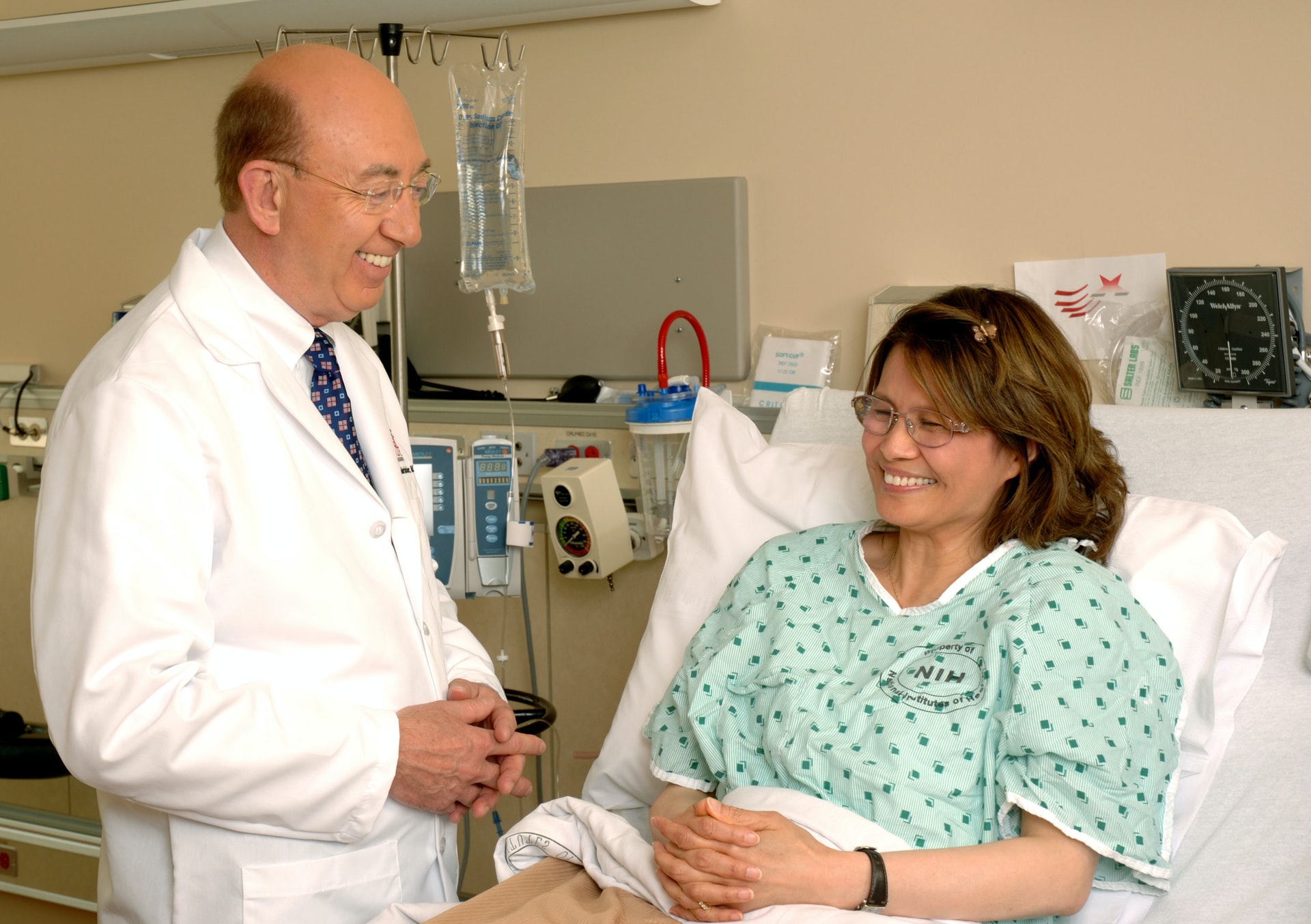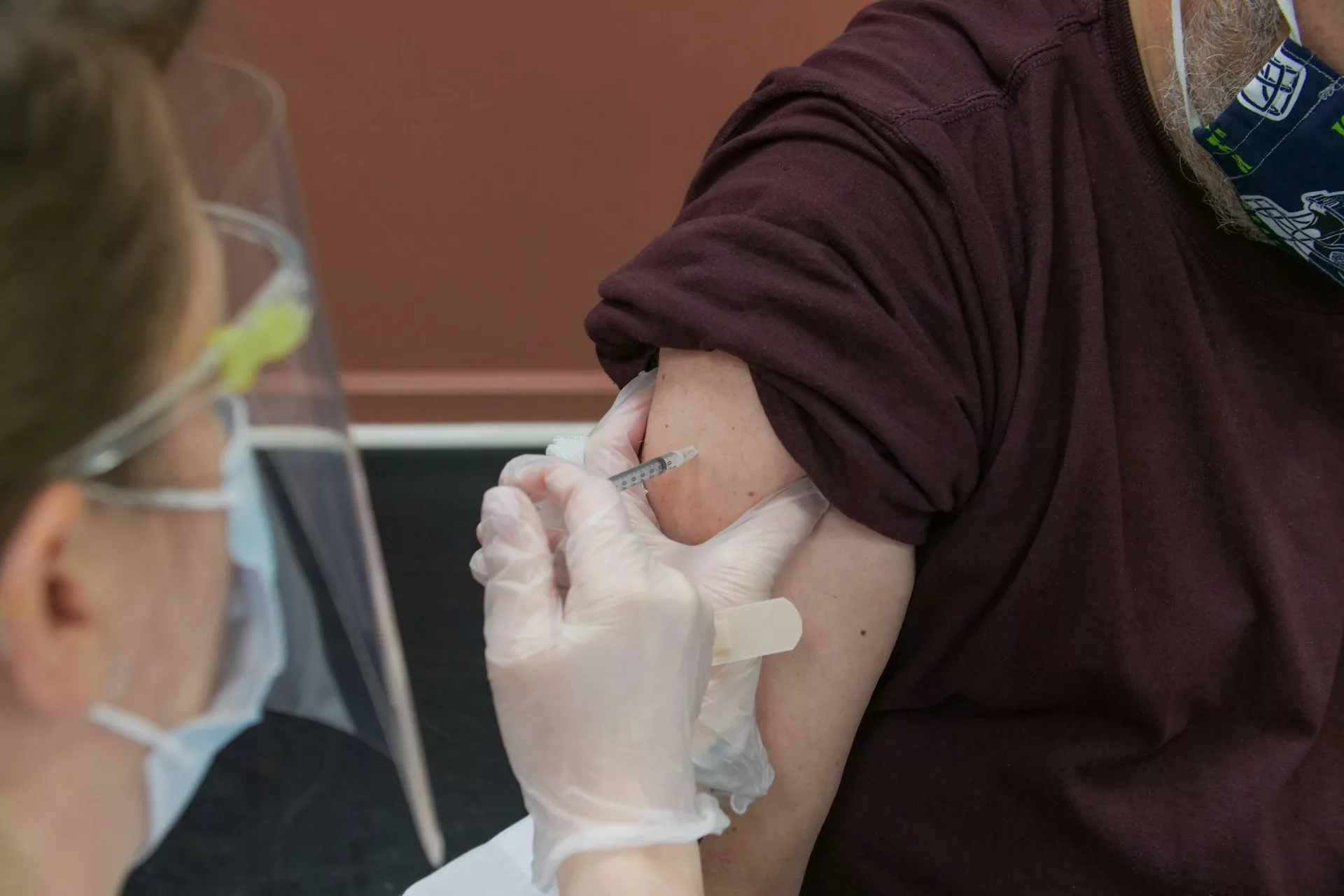Imagine you and I are both medical students on our orthopaedic surgery rotation. We are checking up on patients that were operated on yesterday.
We enter the first patient’s room, and after reading their chart, determine that this patient had a hip replacement. Next, we assess the patient’s five vital signs: their temperature, heart rate, breathing rate, blood pressure, and oxygen saturation. We also look at the area operated on, checking the patient’s hip for any signs of infection.
Then, we leave the room and move onto the next patient, who has also had a hip replacement. Again, we assess their vital signs. Yet this is not enough information to really compare between patients, to understand how they are doing relative to one another or how they have responded to treatment.
We could talk to the patients about how they are doing and even test their mobility. Nonetheless, without measuring the elements of health that matter to patients from their own perspective it is difficult to compare how patients improved or to find the best treatments.
We must consider relevant outcomes to the patient, measures such as pain, quality of life, and goals (Chow et al., 2009; Black 2013). Without measuring how a patient feels and functions, we cannot guide personalised care to patient needs.
Patient-reported outcome measures, also known as PROMs, are rigorously developed and carefully tested questionnaires that can quantitatively measure how someone feels and functions before and after different treatments (Nelson et al., 2015).
PROMs have huge advantages. It is well documented with several systematic reviews, and even a randomised control trial, that PROMs improve communication between patients and doctors. They help us compare between different types of treatments to see which ones are best, and to personalise interventions based on patient needs (Chen et al., 2013; Valderas et al., 2008; Wasson et al., 1999).
For example, new research on metastatic lung cancer found that PROM administration can save lives by sensitively picking up on important patient symptoms that are often missed, allowing for earlier interventions (Denis et al., 2017; Basch et al., 2016). In psychiatry, a randomised control trial also demonstrated that patients report better clinical outcomes when PROMs are used as part of routine care.
Clearly, an intervention as simple as a questionnaire can have a huge impact.
Returning to the vital signs we assessed in our patients, we can now see that these are not enough to measure how patients are doing. In fact, relying on just vital signs misses the most relevant and important outcomes to patients.
Patient voice, which can be captured and measured by PROMs, is a necessary component to measure alongside our traditional vitals.
This is now the case in Gävle County in Sweden, where clinical outcomes in rheumatology are routinely measured through the Rheumatology Quality Registry and PROMs are implemented for routine rheumatological care. Patients in this region had improved clinical outcomes and disease control compared to patients in regions where PROMs were not a routine part of clinical practice.
In the United States, a study of 17 000 patients across 30 states found that implementing PROMs for inflammatory bowel disease improved remission rates from 55% to 77%.
One area which is currently lacking PROM implementation, however, is gender-affirming care. Gender-affirming services include psychosocial, hormonal, and surgical treatments which help gender diverse people feel more comfortable in their body, for example by reducing gender dysphoria.
There has been a 240% increase in referrals for gender-affirming services in the last 5 years, higher than any other NHS service.
However, the quality of gender-affirming services has also been called into question, in part because we currently are not doing enough to capture patient voices or to measure patient-reported outcomes, despite their proven benefit in assessing treatment outcomes.
Every month, journal articles are published describing new techniques for gender-affirming surgery. But PROMs are not used to assess their efficacy and thus we are not capturing patient voice.
The House of Commons Women and Equalities Committee has also raised specific concerns about the quality of gender-affirming services due to undesirable treatment variation. We know from extensive research that gender-affirming treatments are life-saving because they reduce high suicide rates among gender diverse individuals by 73%.
However, when deciding on which hormonal treatment regimens work best, or the best techniques for surgery, we need to know which make patients feel the best about themselves. We cannot answer these questions by just looking at traditional vital signs.
Two systematic reviews specifically outlined the need for patient-reported outcome measures to be implemented for gender-affirming care. They summarised that PROMs are vital to improve the measurement of satisfaction and quality of life in gender-affirming care, to evaluate results of gender-affirming care, and allow for competitive treatment effectiveness research in gender-affirming care (Andréasson et al., 2018; Barone et al., 2017).
Further, an NHS symposium report emphasised the need for strategies to address inequities in gender identity services. They noted research on outcomes for gender identity services as key to determining effectiveness of interventions and improving care.
The Royal College of General Practitioners and the Royal College of Psychiatrists have also called for more research into this area to improve gender-affirming care quality and patient outcomes.
Ongoing research in Oxford aims to implement the first national patient-reported outcome measurement program for gender-affirming services in the world.
To implement PROMs in clinics, it is important to understand the perspectives of participants for how they prefer to have PROMs administered, scored, and used. For example, learning how often people want to complete PROMs, and whether they would prefer web-based applications or face-to-face questions, will help to better implement them into routine clinical care to ensure that the voices of patients are meaningfully captured.
Back on our ward rounds, and we are now checking on people who have received gender-affirming surgery. As always, we review their temperature, heart rate, breathing rate, blood pressure, and oxygen saturation. But now, we also have data on their pain level, quality of life, gender dysphoria, and mobility.
This is undoubtedly more meaningful and useful to us and the other doctors. PROMs measure the most important concepts to patients and can quantitatively measure patient voice. It is crucial to implement PROMs for not just gender-affirming, but for all clinical settings.
References
Andréasson M et al. Patient-Reported Outcome Measures Used in Gender Confirmation Surgery: A Systematic Review. Plast Reconstr Surg. 2018;141(4):1026-1039.
Barone M et al. A Systematic Review of Patient-Reported Outcome Measures Following Transsexual Surgery. Aesthetic Plast Surg. 2017;41(3):700-713.
Basch E et al. Symptom Monitoring With Patient-Reported Outcomes During Routine Cancer Treatment: A Randomized Controlled Trial. Journal of clinical oncology: official journal of the American Society of Clinical Oncology, 2016; 34(6), 557–565.
Black N. Patient reported outcome measures could help transform healthcare. BMJ. 2013;346:f167.
Chen J et al. Ou L, Hollis SJ. A systematic review of the impact of routine collection of patient reported outcome measures on patients, providers and health organisations in an oncologic setting. BMC Health Serv Res, 2013;13:211
Chow A et al. Patient-reported outcome measures: The importance of patient satisfaction in surgery. Surgery. 2009;146(3):435-443.
Denis F et al. Improving Survival in Patients Treated for a Lung Cancer Using Self-Evaluated Symptoms Reported Through a Web Application. Am J Clin Oncol, 2017; 40(5):464-469.
Valderas JM et al. The impact of measuring patient-reported outcomes in clinical practice: a systematic review of the literature. Qual Life Res, 2008;17:179-93.
Wasson JH et al. A randomized trial of using patient self-assessment data to improve community practices. Effect Clin Pract, 1999;2:1-10.





